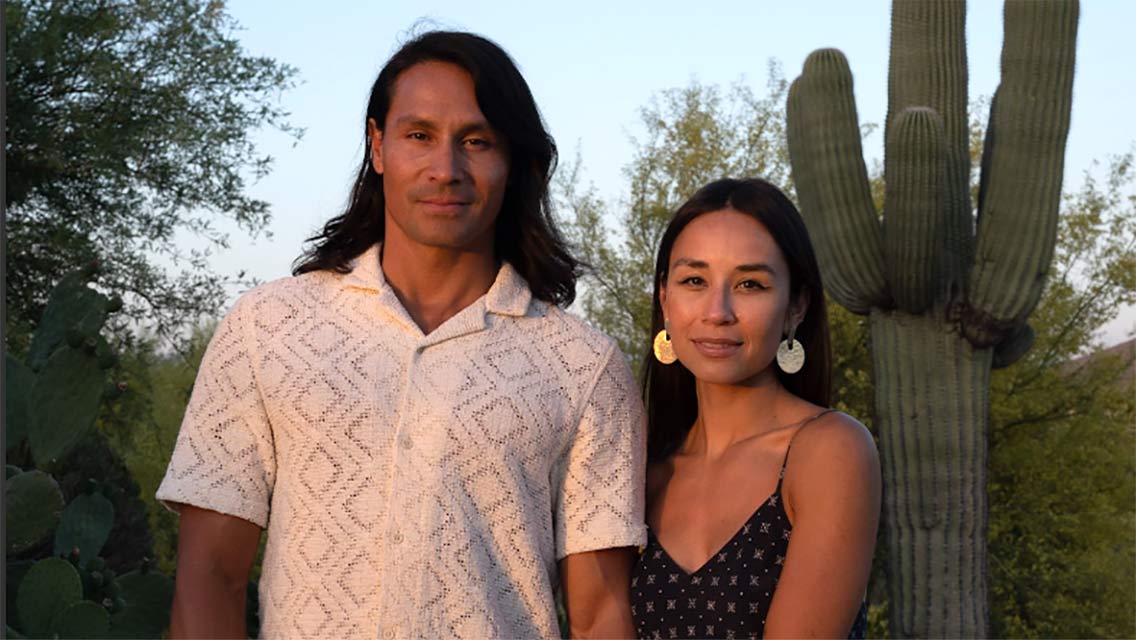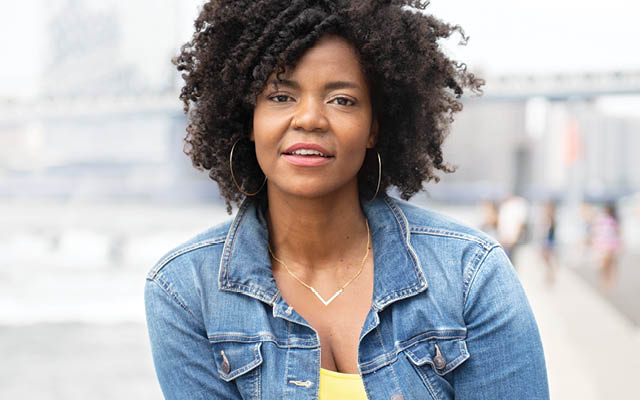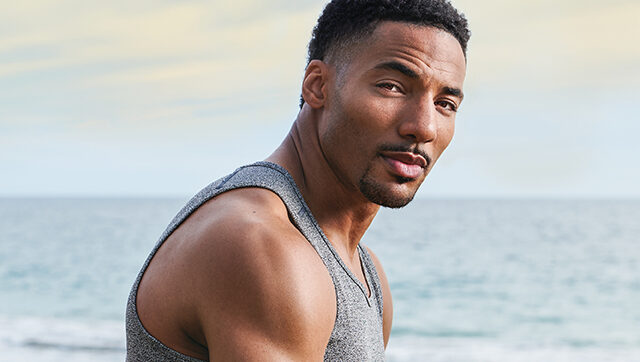The first time I encountered a wellness or self-care practice was in 1999, my senior year at high school. I decided to take “college yoga” for a gym credit, instead of playing badminton half-heartedly with my classmates.
Yoga’s mystique of peacefulness appealed to me as an angsty and eccentric Black girl growing up in South Minneapolis. I fancied myself a spiritual seeker and felt drawn to yoga’s ability to bring metaphysical enlightenment and astonishing flexibility to devotees.
In other words, I thought I was gonna be able to drop it like it’s hot into some splits and levitate away from my teen-life drama.
I remember nervously trying the practice that would become an integral part of my life journey. The only person of color in a gym full of white dance-majors, I felt like I stuck out. We would bend, stretch, and extend into poses whose names were beautiful Sanskrit words I’d never heard before, with translations that almost told a story as we moved through them. Child. Warrior. Triangle. Pigeon. Corpse.
It was the Iyengar style, so the movements were deliberate, exact, and held with intensity. I was amazed to find out I could sweat and be exhausted from stillness.
It was the first time I’d experienced a “practice” for my body, mind, and spirit, and I fell in love. That love deepened over the years, even though I would sometimes still be the only “chocolate chip” in those yoga spaces.
As I got older, however, I realized that most of these spaces — despite their focus on wellness and transcendence — ironically reinforced whiteness, entitlement, and privilege, often by ignoring them, or pretending these things could not exist in “enlightened” places. In my experience, the people who had access to yoga classes, meditation retreats, acupuncture, reiki, and massage tended to be folks who did not look like me or share my socioeconomic background.
And despite how transformative such practices have been in my life, I’ve felt guilty because so few people in my family and community could afford to engage in these practices or prioritize themselves in these seemingly superfluous ways.
Also, as a Black woman, it had been ingrained in me (and the world) that not only should I be able to absorb more pain, stress, and work, but that I should be able to do so with less rest and nourishment.
I share all of this because one can’t look at the state of health for BIPOC (Black, Indigenous, and people of color) communities today and not see the ways that our history of oppression plays a role in how we experience and access healing. The experience of the Black body, for example, has absorbed the weight of enslavement, violence, and fear, as well as being objectified and made dispensable.
Many of the ancient health practices within Indigenous, Black, Latinx, Asian, and even ancestral white communities were criminalized and undermined to clear the way for Western medicine. Many have been appropriated, repackaged, and made financially inaccessible.
In this moment, due in large part to social media’s egalitarian platforms and a rising consciousness about cultural appropriation and radical decolonization, we are seeing BIPOC healers and wellness leaders — or “wholeness” leaders, as Black Girl In Om’s founder, Lauren Ash, refers to her work — reclaim and offer access to healing for ourselves. This is being done radically, with love and justice. Even more so in the time of COVID-19.
Lipstick popping. Headwrap adorned. Melanin glistening. Wisdom dropping. The healers featured here have adapted their yoga education and doula mentoring to virtual platforms. They show us what we already got in our cupboards to care for our bodies. They ask their more privileged clients to support the healing of others who don’t have the funds. They insist on care for oppressed bodies in the midst of a global pandemic, all while interrogating and de-centering whiteness.
For all the upheaval and loss of the past year, these leaders are shining deeply and brightly, holding space, and lighting the way.
Lauren Ash
Wellness advocate and founder of Black Girl In Om, a global wellness site, podcast, and event series
www.blackgirlinom.com
Lauren Ash’s path to creating Black Girl In Om (BGIO) blossomed from her own need as a Black woman to find healing in a world hostile to our very existence. The Minneapolis-based wellness advocate honors her ancestors and elders, and she attributes her vision and drive to her grandmother, Lillian.
“I think of my maternal lineage that goes back to the South, specifically Louisiana, and having a very resilient grandmother. . . . Just knowing everything that she in particular had to endure to not only survive, but my grandmother was thriving! She really is the embodiment of what I’m doing now.”
The idea for Black Girl In Om was sparked for Ash in college, where she witnessed acts of racism against other Black women on the campus of her mostly white liberal-arts university in Minnesota. The experience was life changing.
From there, she began her journey of healing in graduate school, where she became inspired to create a healing space that she saw was scarce in the world, a space that centered Black women.
She now hosts The Circle, a highly successful digital program for women of color, alongside the beloved BGIO podcast. She and her team also offer wellness-practitioner training; curate an online publication, Om; and more.
“Through healing myself and being self-reflective about my own life experiences and the healing trajectory that I’ve inherited from my ancestors, I’m able to spark and catalyze healing for others.”|
Latham Thomas
Wellness and birth coach, yogi, and founder of Mama Glow, a New York City–based maternity lifestyle brand committed to supporting women along the childbearing continuum
www.mamaglow.com
I first met Latham Thomas when we were both in our 20s living in Harlem. She was a young mom teaching prenatal yoga to teens in the South Bronx, running a gourmet vegan catering business, beginning her studies as a doula, and planting the seeds for Mama Glow.
Thomas teaches women (and people of all genders) how to luxuriate in the sacredness of their temple as they move into the threshold of bringing life to the planet. As she supports soon-to-be parents starting the journey of motherhood, she also teaches them how to center, love, and trust themselves.
“I had this Vedic astrology reading,” she recalls. “In the reading, he said, ‘You’re supposed to mother the mother.’ It was clear to me when he said that. I was like, ‘OK’ . . . then shortly after that, I was accepted to a doula fellowship program.”
Thomas sees access to a tender and nourishing birth experience as the right of all people, and centering people of color and LGBTQIA+ parents has been an important part of her work. She understands the need to heal the legacy of Black oppression within spaces of birth, maternity, and parenthood.
“I think about it like we think about Harriet Tubman. She is sort of like a guardian angel, a north star, as we think about helping people cross a river in the darkness, and what that looks like to navigate a terrain that you haven’t crossed before,” she says. “I’m there and I can help guide them, and it’s a privilege. It’s such an honor to be able to do that.”
(Read more about Thomas in her EL cover story at “Owning Her Glow: Latham Thomas”.)|
Adaku Utah
Healer, teacher, artist, sixth-generation herbalist, and cofounder of Harriet’s Apothecary
www.harrietsapothecary.com
Healing and herbalism run deep in Adaku Utah’s lineage. Harriet’s Apothecary is “an intergenerational healing collective led by Black cis women, queer and trans healers, artists, health professionals, activists, and ancestors.” It’s named for the incomparable freedom-shaping ancestor Harriet Tubman, whom Adaku identifies as her cofounder.
She traces her origins as a healer back to the chronic illnesses she suffered as a child. Western doctors treated her, but her mom, a fifth-generation herbalist, would make her medicine. This juxtaposition had an effect on her.
“I grew up having both of these bridges to health and healing: a very complicated one that had to interface with the state, and another that interfaced with our relationship to the land,” she recalls. “My life would not be here without having people around me who cared for me.”
This vision of collective and adaptive healing sustains the work of the Brooklyn-based collective. They host community healing villages that offer bodywork, nutritional counseling, plant-based medicine-making, and more.
“I feel my role is to continue this legacy that I come from, to be a part of restoring the wholeness of our people, including myself,” she explains. “And to set a precedent and blueprint for ecosystems that are worthy of the power and alchemy of Black and Indigenous people.”
When I ask her about affirmations for BIPOC people in this time of pandemic and uncertainty, she offers this: “Regardless of the societal narrative that’s coming at our bodies right now, your body is wise, your body is sacred. You are such a necessary and important part of the universe.”
Serita Colette
Healing-justice educator who teaches yoga, Ayurveda, and sustainable healing practices
www.seritayoga.com
Serita Colette’s path to supporting BIPOC folx to be in their bodies in intentional and liberated ways was grounded in self-discovery. In Los Angeles, she interned at a needle-exchange program and drop-in center for youth experiencing homelessness. She often spent shifts listening to people who came through the center; this was where she first felt the spark around healing work.
“Being there changed my life,” she recalls. “It really made me think about bearing witness to injustice and being a listener, and then deciding what to do with that information.”
Colette studied classical Indian dance in her birthplace of Kerala, India, where she commenced a more intensive study of yoga.
When she returned to the United States and began teaching yoga, she realized there were few spaces that felt welcoming for BIPOC students, so she began to focus her teaching practice on providing access. She created sliding-fee scales for her classes, fundraised for BIPOC folx to study yoga on retreat in Mexico, and facilitated BIPOC-only practice spaces.
“For Black, Brown, and Indigenous folx, a lot of that is coming back to who we were, a practice for remembrance,” she says of her approach to her work.|
Arisika Razak, MPH
Core teacher at the East Bay Meditation Center in Oakland, Calif., former chair of the Women’s Spirituality Program at the California Institute of Integral Studies
www.eastbaymeditation.org
Meditation teacher Arisika Razak is lively, engaging, and peaceful. Even being in her presence on the phone puts me at ease. “In the United States, the belief is that you make a decision, and that this is what you want to do,” she says. “But I think Spirit made the plan for me, and I followed it.”
She started her work as a hospital midwife after her own home birth. She knew about the widespread traumatic experiences many women — particularly BIPOC women — were having in hospitals. “I love home birth. But what I realized was most women, and most women of color, gave birth in the hospital.”
“Labor is always something bigger than you can experience,” she explains. “It’s like a template for all subsequent rites of initiation. You are confronted with a force bigger than you. Your identity falls away. You are a body, with this great energy moving through you.”
Today, Razak is one of the core teachers at the East Bay Meditation Center in Oakland, a space for people of color, LGBTQIA+, and other underrepresented communities interested in meditation, Buddhism, and social justice. Her work has always centered transformational healing: leading healing workshops for people of all genders, holding meditation spaces for Black women of multiple faiths, choreographing original dances to reflect on the struggle and sacredness of women’s bodies.
She brings all of these experiences to her work as a meditation teacher at East Bay, where she offers her wisdom to beings of all genders and ethnicities.
“I believe that my people survived the Middle Passage because somebody moaned and somebody else moaned back,” she explains. “And there was a chorus of crying out, of moaning in different languages, crying out to Spirit, and we heard each other and we echoed even if we couldn’t understand the language.”|
Sharon Day
Executive director of Indigenous Peoples Task Force in Minneapolis, enrolled member of the Bois Forte Band of Ojibwe, second degree M’dewin, grandmother, artist, musician, and writer
www.indigenouspeoplestf.org
Sharon Day’s healing work with the Indigenous People’s Task Force (IPTF) exemplifies the importance of spiritual grounding and ancestral traditions. IPTF provides culturally appropriate HIV education and services to the Native community in Minneapolis, as well as connecting people to their indigenous healing traditions. The center has a teaching garden where they grow sacred medicines and traditional foods.
For decades, Day’s work supported the healing paths of people living with HIV/AIDS and chemical-dependency issues, as well as young Native Americans in the court system. She realized, as part of her work with Native youth, that she wanted to support them in learning their own traditions and cultural ways. “Most of the time these young kids who were Natives were missing something in their life, and what they were being exposed to was racism and oppression.”
This inspired her to start her own journey to initiation in the M’dewin tradition (M’dewin is Anishinaabe for Grand Medicine Society). Years later, at the invitation of Grandmother Josephine Mandamin in 2003, she walked for two days around Lake Superior, in prayer for water protection, and discovered her calling as a water walker. Over the years, she has walked more than 20 sacred waterways in Minnesota and beyond.
“We’re all spiritual people, and we all have insights into that part of ourselves,” she says. “When we practice with people from our community, our spiritual growth is intensified, because we have people in our circle to bounce things off of, to discuss and to share ritual, and to share family. So, our spiritual growth is accelerated then.”|
Resmaa Menakem, MSW, SEP, LICSW
Therapist, trauma specialist, and author of My Grandmother’s Hands: Racialized Trauma and the Path to Mending Our Hearts and Bodies
www.resmaa.com
As a somatic (body-centered) therapist, Resmaa Menakem has counseled families dealing with domestic violence, acted as a trauma consultant for the Minneapolis Public Schools, and led workshops on cultural somatics with the Minneapolis Police Department. He also managed the wellness and counseling services for civilians on 53 U.S. military bases in southern Afghanistan.
Menakem’s book, My Grandmother’s Hands, explores how we all carry the trauma of what he calls “white body supremacy.” His workshops and therapy practice are centered in helping people embark on a “course for healing historical and racialized trauma carried in the body and the soul.”
When we heal ourselves, we heal others too, he says. “The point is to understand how you contribute individually to the communal health. It’s not just about your own individual health, because the horror that has happened to us and our people didn’t happen to us individually. It happened to us communally and continues to happen to us communally. So, we have to have communal ways, embodied little ways, of understanding this thing.”
“I see myself actually carrying on a pretty long history of healing,” he says. “I consider all of the freedom fighters healers, because they charted a course of liberation and freedom in ways that did heal.”|
rowan emmanuel
Community herbalist, bodyworker, and codirector of Spiral Collective, a reproductive-health collective
www.spiralmn.com
I met rowan emmanuel at a political organizing meeting in Minneapolis, where they were offering free balms and tinctures they had made. (emmanuel uses the nonbinary pronouns they/them and lowercases their name.) “I like to see my work as holding space for the in-between,” emmanuel says.
Their healing work focuses on justice, access, and rest for BIPOC people — who often come from lineages of exhaustion and oppression — as well as teaching people how to find medicine in their own kitchens.
“Something that I really love is that there’s so much medicine in our kitchen cabinets, in our food. It’s been so beautiful and inspiring to see folks garden — you know, tomatoes will grow in a 4-inch plastic dish,” says emmanuel, who identifies as Xicanx Indigenous and Swana, and whose family comes from Mexico and Jordan by way of Palestine.
“Our nonhuman kin, like the soil, the plants, the birds, they haven’t forgotten. They’re still there holding us as we start to remember, as we stop seeing healing as something that white folks do, stop seeing healing as something that is commodified and sold to us.”
They pause and reflect before continuing. “It’s revolutionary when we start returning back to our healing, start opening up old wounds and start nursing them, pouring in the water, and the salt, and the honey. The time and the attention that we deserve.”




This Post Has 0 Comments